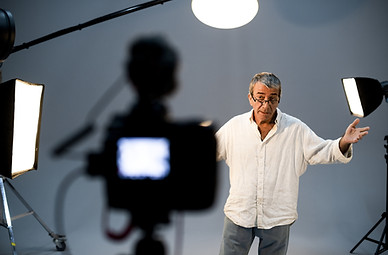PICTURE ESQUE
PICTURE ESQUE is your global hub for creative professionals! Connecting models, actors, entertainers, agents, casting directors, photographers, and more.
Showcase your talents with three customizable photo blocks, link directly to your resume or credits, and join our exclusive forum to share ideas and opportunities.
Are you an Agent, Manager, Casting Director, or Director? Reach out to us for your complimentary VIP Account!




Self-Taping Tips for Actors
Basics: The foundation of a good self-tape starts with the technical details. Make sure you have good lighting and a solid-colored background. Film on your smartphone in landscape mode (horizontal) with the camera at eye level. Avoid having too much space above your head; your face should be the main focus. If you're new to self-taping, you can find a lot of great tutorials online.
Sound: Quality sound is essential. While your smartphone's built-in microphone is okay, a lavalier mic will significantly improve your audio. It makes your voice crisp and clear, so even your softest lines are easily heard. A good mic ensures casting directors can focus on your performance without distraction.
Tone: Matching the correct tone is crucial, even for smaller roles. A bank teller on The Marvelous Mrs. Maisel will have a completely different tone than one on CSI: Vegas.
A lot of actors miss opportunities because they don't do their research and misread the tone of the project.
Framing: Your framing should support your performance. Casting directors might specify the frame, but if they don't, follow these.
General Guidelines: For drama, where a character's internal thoughts and emotions are key, use a tighter frame, typically from the shoulders up.
For comedy or action, where movement and physical expression are important, a wider frame works best.
Takes: Only submit more than one take if you can offer a truly different interpretation of the scene. For example, you could show a bank teller who's warm and friendly in one take and then stern and no-nonsense in another. The goal is to show your range, not a slightly different version of the same performance.
Review: Always watch your takes before you submit them. Check for mistakes like stumbling over a line, mumbling, or unclear enunciation. It's just as important to watch how you're listening in the scene as it is to watch your performance. If you feel like your listening is disconnected, it's probably best to do another take.


